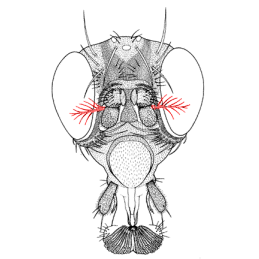|
 |
||
|
||
 Users Online
Forum Threads
Newest Threads
· Limoniidae help id, ...· Nematocera, help id,... · Tachinidae or Sarcop... · ID: Cheilosia? #3 · ID: Cheilosia? #2 Hottest Threads
Theme Switcher
Last Seen Users
Latest Photo Additions
|
Terms Infusion (Glossary) - v3.10
| Date and time
Login
Temporary email?
Due to fact this site has functionality making use of your email address, any registration using a temporary email address will be rejected.
Paul Donate
Latest Articles
· Voltinism in Chaoborus
· Vitaliy Nikolaevich ... · Mating behaviour and... · Oviposition into the... · African Invertebrates Syrph the Net
License Agreement - Click to Download Public files of Syrph the Net can be downloaded HERE Last updated: 25.08.2011 Shoutbox
You must login to post a message. 06.12.25 21:37 He last posted here in April, identifying some Chloropidae.
04.12.25 20:02 Dr Michael von Tschirnhaus, a leading expert on Chloropidae and Agromyzidae, died on 16 September 2025 at the age of 86. He will be greatly missed by the international community. R.I.P.
03.12.25 12:46 Anyone has the scan of "Harkness, R. D.; Ismay, J. W. 1976: A new species of Trachysiphonella (Dipt., Chloropidae) from Greece, associated with an ant Cataglyphis bicolor (F.) (Hym., Formicidae)
01.12.25 22:29 I will try to fix the messages this month. We have to make some other configuration changes before software goes out of support at end of year.
29.11.25 21:57 I would prefer not to receive any more messages from diptera.info signed by Paul... (Thread reply notification)... Could they be signed by ‘The diptera.info team’?
19.11.25 12:31 It is with deepest sadness in my heart that I announce that on Saturday, November 15, one of the great minds of world dipterology, prof. Rudolf Rozkošny, left us forever.
Please remember him with a
15.08.25 10:15 For those specialists not active on Facebook, I just ask to consider to join our group on FB. Please, be aware that it is not necessary at all to be active on FB outside the diptera group. Actually, n
15.08.25 10:13 We received requests to get permission to ask for ID in our Facebook group, https://www.facebo
ok.com/groups/1798 95332035235/ Until now we pointed to diptera.info, but since Paul's passing we not 23.06.25 18:10 If you have some spare money, there is a copy (together with keys to pupae and larvae) for sale by Hermann L. Strack, Loguivy Plougras, France
23.06.25 11:18 Appreciate it, Tony Irwin! I got the hint to use the key next to Langton and Pinder key for females of Chironomidae. So no specific queries, except the keys...
I will keep this on my list and hope th
|
|
images in Diptera Gallery and Forum of their respective owners Powered by PHP-Fusion copyright © 2002 - 2025 by Nick Jones. Released as free software without warranties under GNU Affero GPL v3. SimpleAsThat |
||
| Render time: 3.20 seconds | 254,679,962 unique visits | ||










![header=[apex] body=[Plural: apices. The end of something 'protruding from' or 'attached to' the (imaginary) center of the body or the end removed from the center of the body. For example, the end of the wing (apex of the wing), the abdomen (apex of the abdomen), the tibia (apex of the tibia), etc.<br /><img src='../../infusions//terms/images/no_image.gif' style='vertical-align:middle;' />] delay=[0] fade=[on]](../../infusions/terms/images/help.gif)
